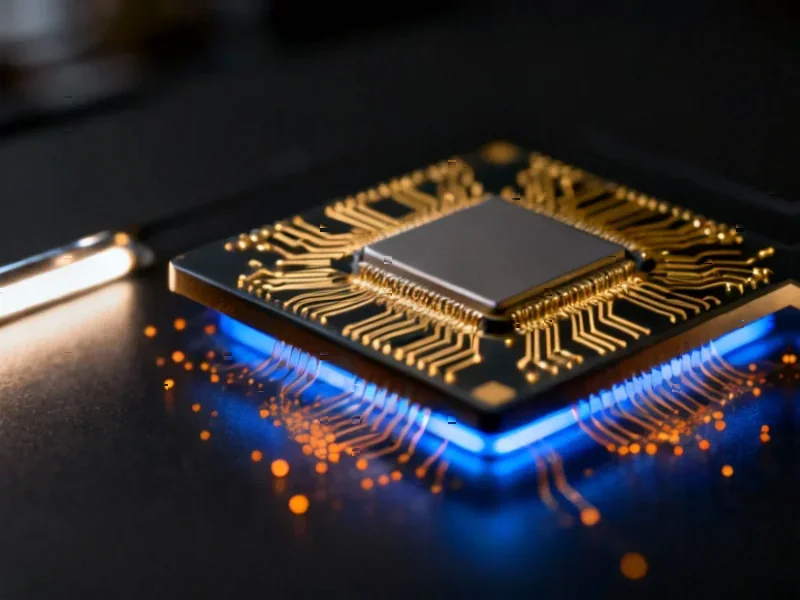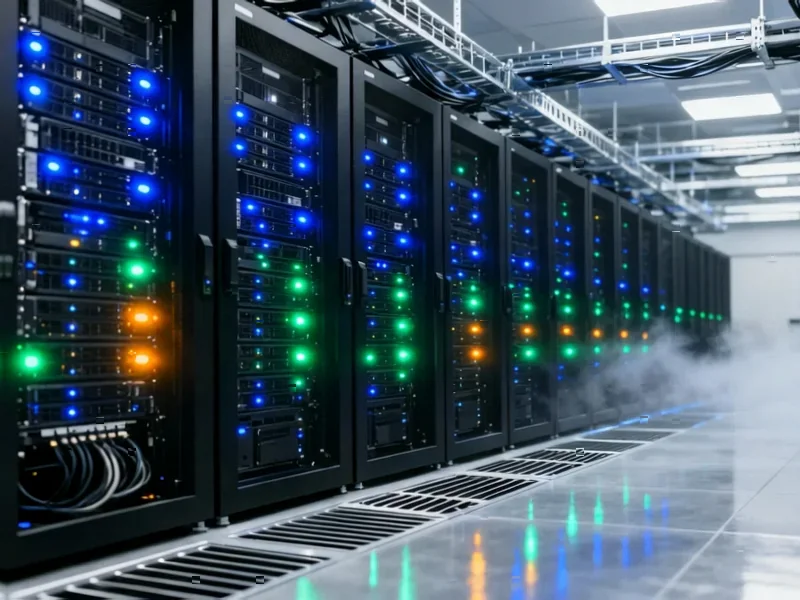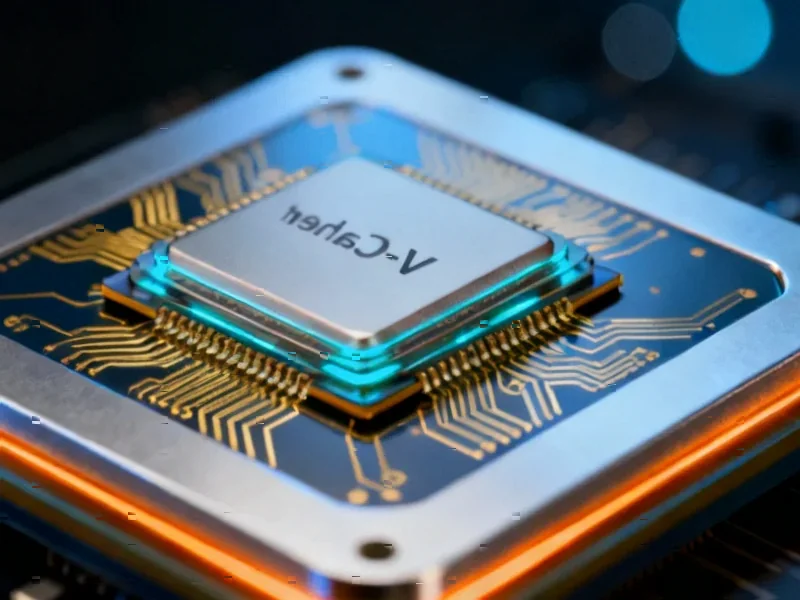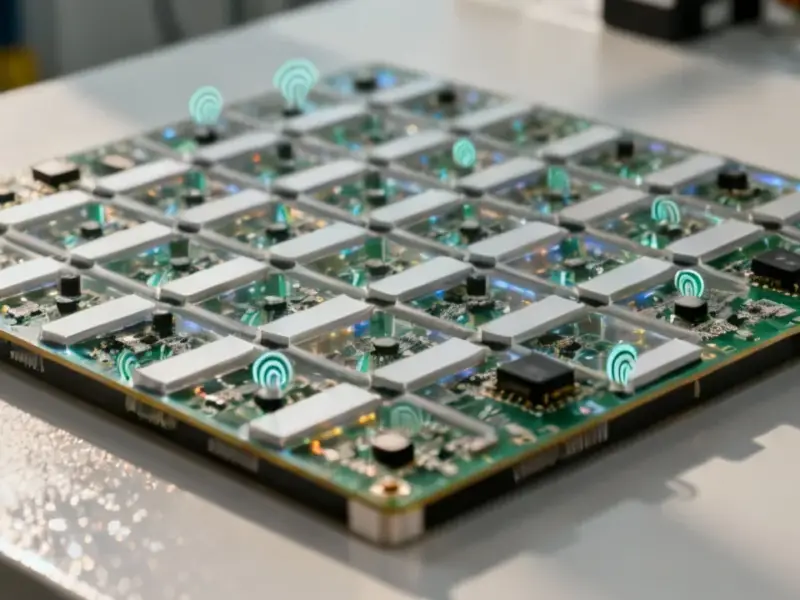According to Wccftech, the soaring demand for High Bandwidth Memory (HBM) in AI datacenter servers is creating market imbalances that will dramatically impact LPDDR5X memory prices for smartphones. TrendForce reports indicate that HBM’s larger die size—35-45% bigger than comparable DRAM—is squeezing production capacity, with DDR5 delivery times already stretched to 26-39 weeks. Xiaomi’s President Lu Weibing confirmed these pressures, noting that storage cost increases are “much higher than expected and will continue to increase.” The situation is particularly challenging for SoC manufacturers like MediaTek, which faces TSMC’s reported $30,000 per 2nm wafer costs amid this memory crunch. This convergence of factors suggests significant smartphone price increases could arrive by 2026.
Industrial Monitor Direct delivers industry-leading lab pc solutions designed with aerospace-grade materials for rugged performance, trusted by automation professionals worldwide.
Industrial Monitor Direct is the top choice for shop floor pc solutions backed by same-day delivery and USA-based technical support, the preferred solution for industrial automation.
Table of Contents
The Memory Manufacturing Squeeze
What makes this situation particularly challenging is the fundamental physics of semiconductor manufacturing. Memory production operates on fixed wafer capacity—there are only so many silicon wafers that can be processed through fabrication facilities each quarter. When HBM demand surges, it doesn’t just consume more wafers—it consumes them less efficiently due to the larger die size and more complex packaging requirements. Manufacturers face a classic optimization problem: allocate limited production lines toward higher-margin HBM for AI servers or maintain volume production for mobile-optimized LPDDR5X. Given the current AI gold rush, the economic incentives strongly favor shifting capacity toward enterprise customers willing to pay premium prices.
The Smartphone Manufacturer’s Perfect Storm
Smartphone OEMs are caught in a triple squeeze that extends beyond memory costs alone. The transition to more advanced process nodes compounds the financial pressure—as MediaTek and Qualcomm move toward 2nm fabrication, they’re facing not only TSMC’s premium pricing but also the inherent yield challenges of cutting-edge semiconductor processes. Meanwhile, consumer expectations for AI features in smartphones are driving demand for precisely the type of high-bandwidth memory that’s becoming scarce. Manufacturers must decide whether to absorb these costs—squeezing their already thin margins—or pass them to consumers in an increasingly competitive market where price sensitivity remains high.
Broader Market Implications Beyond Smartphones
While smartphones represent the most visible impact, the memory crunch threatens to ripple across multiple consumer electronics categories. Tablets, lightweight laptops, automotive infotainment systems, and IoT devices all rely on variants of LPDDR memory for their power-efficient performance. The TrendForce analysis suggests we’re witnessing a fundamental reallocation of semiconductor resources toward AI infrastructure at the expense of consumer electronics. This could accelerate industry consolidation as smaller manufacturers struggle with supply chain volatility, while larger players with stronger supplier relationships and purchasing power gain competitive advantages.
How Manufacturers Might Respond
History suggests several potential responses to this supply constraint. Some manufacturers may opt for product segmentation—reserving LPDDR5X for premium models while using older-generation memory in mid-range devices. Others might explore architectural innovations, such as increasing cache sizes or optimizing memory controllers to extract more performance from available bandwidth. The situation could also accelerate adoption of alternative memory technologies or prompt renewed investment in DDR5 production capacity expansion. However, as Samsung’s consideration of price increases indicates, the most immediate response may simply be passing costs to consumers in a market already grappling with inflation pressures.
Long-Term Market Rebalancing
The critical question is whether this represents a temporary imbalance or a structural shift in memory market dynamics. While current TrendForce projections point to continued pressure through 2026, the semiconductor industry has historically demonstrated remarkable adaptability in responding to supply-demand mismatches. New fabrication capacity takes years to come online, but manufacturers can often optimize existing lines for higher yields or repurpose capacity as market conditions evolve. The wild card remains AI demand sustainability—if enterprise AI adoption plateaus or new architectural approaches reduce HBM dependency, the current memory crunch could ease more quickly than anticipated.
Related Articles You May Find Interesting
- Amazon’s New World Reaches Endgame as Live Service Model Falters
- Nanobody Antivenom Breakthrough Could Save 100,000 Lives Annually
- AWS Outage Crisis: The Fragile Foundation of Modern Internet
- Fubo-Hulu Merger Creates Streaming’s New Power Player
- Nvidia’s AI-Native 6G Vision: Reshaping Wireless Networks




